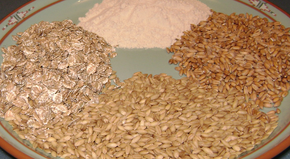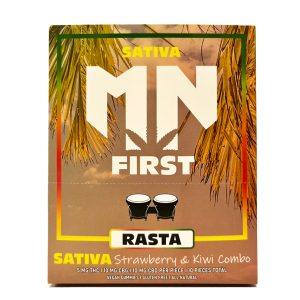**Uses of Gluten**:
– Gluten forms a network in dough for rising and shape maintenance.
– Higher gluten content leads to chewier dough, while less gluten yields tender products.
– Gluten strength is measured using a farinograph in the baking industry.
– Added gluten enhances bread stability and chewiness.
– Gluten is used in imitation meats, cosmetics, hair products, and pet foods.
– Gluten acts as a stabilizing agent in various food products like beer, soy sauce, ice cream, and ketchup.
**Gluten-Related Disorders**:
– Include celiac disease, non-celiac gluten sensitivity, and wheat allergy.
– Gluten peptides trigger gluten-related disorders like celiac disease.
– Gluten-related disorders have increased in frequency due to various factors like diet changes and wheat types.
– Celiac disease affects approximately 1-2% of the population and can lead to severe complications if untreated.
– Non-celiac gluten sensitivity affects 6-10% of the population and presents challenges in diagnosis.
**Effects of Gluten on Health**:
– Gluten can directly impact cells and cause cellular damage.
– In vitro studies show peptides promoting cell apoptosis and altering cellular morphology.
– Gluten can activate T cells and have cytotoxic effects in some individuals.
– Gluten is linked to autoimmune disorders like diabetes mellitus type 1 and thyroiditis.
– Gluten can be broken down into opioid-like substances, masking its harmful effects.
**Gluten Labeling and Regulation**:
– ‘Gluten-free’ labeling indicates low gluten levels, not complete absence.
– Different countries have specific laws on gluten labeling, with varying regulations.
– International standards like Codex Alimentarius and regulations in countries like Brazil, Canada, EU, UK, and the US govern gluten labeling.
– Clear labeling rules are essential for people with gluten-related disorders.
– FDA defines ‘gluten-free’ as below 20 parts per million and requires listing wheat or other allergens on labels.
**Research and Technology Involving Gluten**:
– Studies have identified toxic epitopes in gluten peptides and their effects on gut permeability.
– Modification of gluten composition impacts bread functionality in food technology.
– Enzyme preparations and mixing conditions affect bread quality.
– Gluten composition determines dough properties, with specific tests predicting baking performance.
– Gluten-free diets in children require careful nutrition planning, and the role of oats in celiac disease treatment needs further examination.
Gluten is a structural protein naturally found in certain cereal grains. The term gluten usually refers to a wheat grain's prolamins, specifically glutelin proteins, that naturally occur in many cereal grains, and which can trigger celiac disease in some people. The types of grains that contain gluten include all species of wheat (common wheat, durum, spelt, khorasan, emmer and einkorn), and barley, rye, and some cultivars of oat; moreover, cross hybrids of any of these cereal grains also contain gluten, e.g. triticale. Gluten makes up 75–85% of the total protein in bread wheat.

Glutens, especially Triticeae glutens, have unique viscoelastic and adhesive properties, which give dough its elasticity, helping it rise and keep its shape and often leaving the final product with a chewy texture. These properties, and its relatively low cost, make gluten valuable to both food and non-food industries.
Wheat gluten is composed of mainly two types of proteins: the glutenins and the gliadins, which in turn can be divided into high molecular and low molecular glutenins and α/β, γ and Ω gliadins. Its homologous seed storage proteins, in barley, are referred to as hordeins, in rye, secalins, and in oats, avenins. These protein classes are collectively referred to as "gluten". The storage proteins in other grains, such as maize (zeins) and rice (rice protein), are sometimes called gluten, but they do not cause harmful effects in people with celiac disease.

Gluten can trigger adverse, inflammatory, immunological, and autoimmune reactions in some people. The spectrum of gluten related disorders includes celiac disease in 1–2% of the general population, non-celiac gluten sensitivity in 0.5–13% of the general population, as well as dermatitis herpetiformis, gluten ataxia and other neurological disorders. These disorders are treated by a gluten-free diet.





